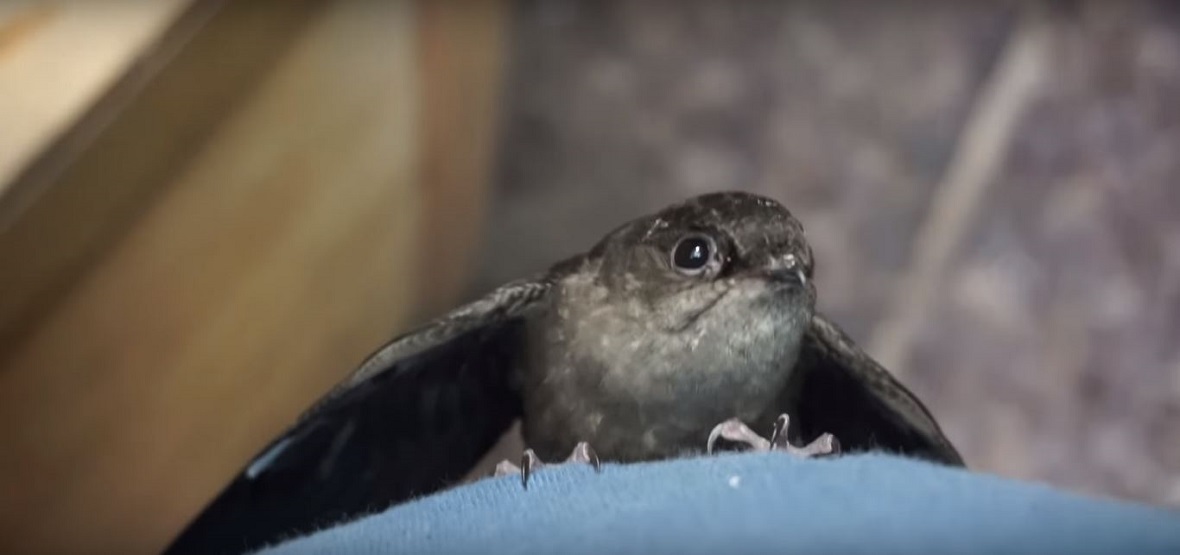- info@animalatticpest.com
- Call - we service 300 locations
All About Chimney Swifts
As the name implies, chimney swifts are among the most common types of birds that you will find in your chimney. To get a better idea of how to deal with these birds and understand why they are in your home in the first place, it helps to know about their biology and more. We actually know a great deal about the chimney swift since these are birds that are easy to capture and then band for studying.

Appearance
You can recognize a chimney swift by its silhouette and smudge-gray coloring. They are typically dark brown-gray throughout their bodies but a bit paler along the throat. They sometimes seem all black in the distance or against the sky. At times, the plumage may be browner or even black due to contact with the soot of chimneys. As juveniles, chimney swifts will have whitish tips on the outer webs or their secondaries.
The flight style of this bird is distinctive thanks to its curving wings, tiny body, and wingbeats that are shallow and stiff. Chimney swifts are small with slender bodies and their wings are long and narrow in addition being curved. Their heads are round and sit on the end of short necks. The bills are so small that you will typically have a difficult time seeing it. Chimney swifts have tails which are short and tapered in nature. The long claws of chimney swifts are why they have to cling to walls instead of perching like other birds.
Life Cycle
The parent chimney swifts will use their saliva, which is glue-like and comes from a gland underneath the tongue, to help them cement their nest onto the rock face or chimney wall they have chosen. At times, an unmated bird may assist the breeding pair with the rearing process. On average, a chimney swift will have 4 or 5 eggs although it can be between 3 and 6. They are white and incubated by both parents for 19 to 21 days. The parents work together to feed the young via regurgitating insects. After two weeks or so following the young hatching, they outgrow the nest and cling on the nearby wall. At this point, they may or may not have their eyes open. They first fly at around 28 to 30 days.
Habitat
The chimney swift can’t perch when it lands. Instead, it will hang onto vertical walls within chimneys or within caves hollow trees. They can live in any dim and enclosed area with a vertical surface, including wells and air vents as well. As chimneys have dropped in popularity, this has had a negative impact on the species. In fact, the rise of chimneys as European settlers arrived had previously led to an increase in the chimney swift population. If an intruder approaches a chimney swift by its nest, the adults will spring backwards then loudly snap their wings together multiple times.
Typically, only a single breeding pair of chimney swifts will roost together. They may allow others that are not breeding to join them, but it is uncommon for multiple breeding pairs to share a chimney, except in the winter. When it is not the breeding season, you may notice large quantities of chimney swifts roosting in a single chimney. This helps keep them warm as the temperature in a chimney since it can be as much as 70 degrees warmer than it is outside.
Diet
Chimney swifts will forage over a range of areas, including urban and suburban, lakes, forests, rivers, and fields. They forage only while in the air, scooping insects right out of the air. They will typically fly high but in wet weather, they may forage very low. In most cases, chimney swifts forage in small groups. These birds will eat a range of flying insects, such as flies, true bugs, moths, and beetles, as well as spiders.
Behavior
This bird is highly energetic and spends the vast majority of its time in the air. When flying, its wingbeats are nearly constant as well as stiff due to little flexing along the wrists. At times, it seems as if these birds twist side to side and go to the bank erratically. Chimney swifts are one of the birds with the most time spent in the air. They even bathe while flying by gliding down towards the water, hitting the surface using their bodies, and bouncing up before shaking water off their plumage before they fly away.
While flying, it is common for chimney swifts to give off their chattering, high call. This call is a series of twittering, fast chip notes that typically lasts around three seconds. While flying, the chips are frequently so close together that they sound almost like the chitter of an insect. When not in flight, the chips may be almost a full half-second apart from each other, giving a great deal of variation to the chimney swift calls.
